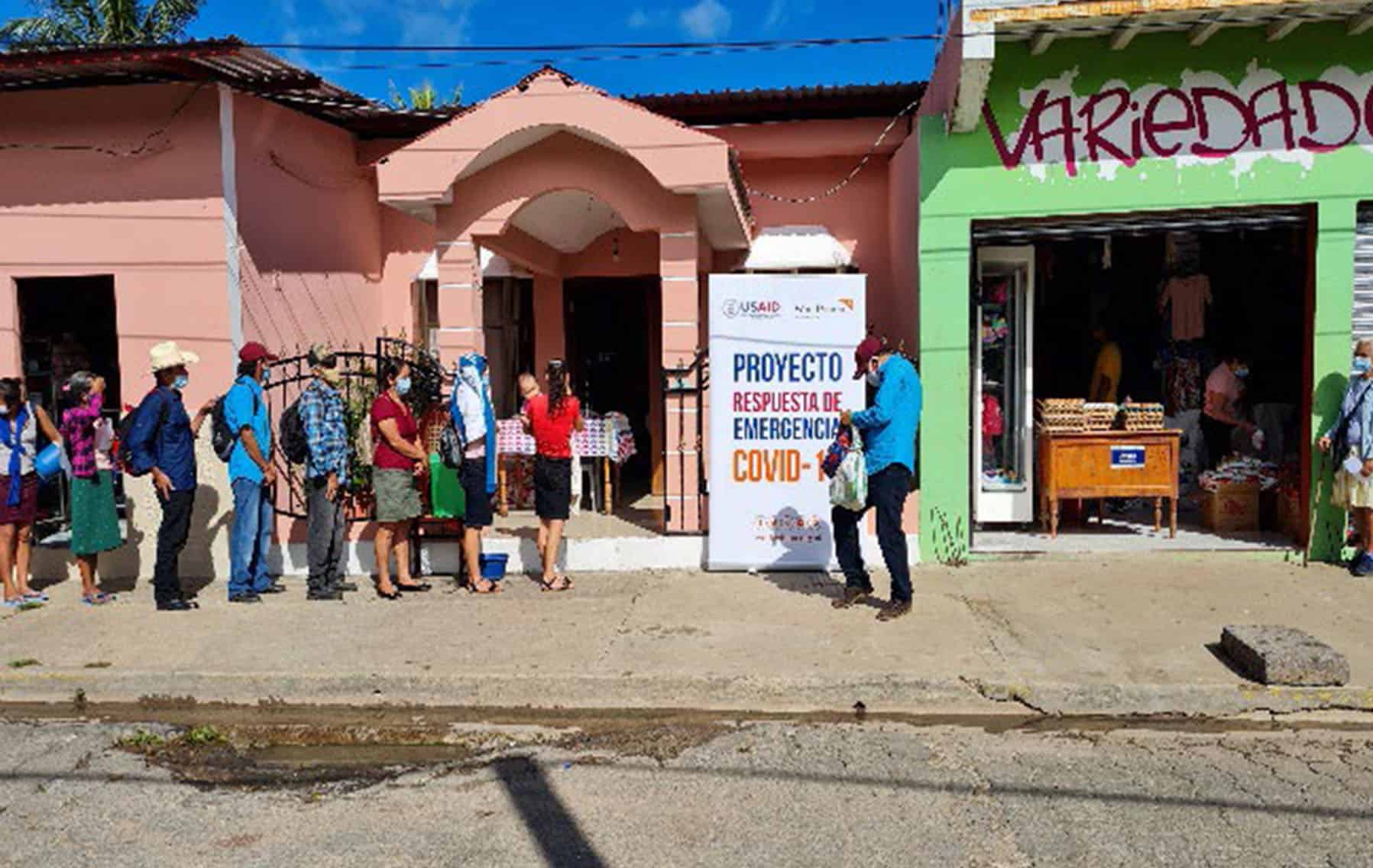
Gathering Crucial Data in Conflict-Affected Environments: ME&A’s Approach to Third-Party Monitoring
In challenging and conflict-affected environments, getting accurate data on development activities can be tough. That’s where Third-Party Monitoring (TPM) via USAID partners like ME&A comes in. Local third-party monitors can access areas that USAID personnel and traditional monitoring, evaluation, and learning teams often can’t, gathering crucial data for better decision-making and effective activity implementation.
“ME&A’s approach to TPM is consistent with ME&A’s overall suite of services supporting locally led development. This suite includes our unique approach to local capacity strengthening at systems levels,” said ME&A President and CEO Teresita Perez. “Our focus on systems enables us to provide innovative, culturally sensitive solutions tailored to each community’s unique needs. We also use advanced data-gathering technologies for TPM to ensure marginalized voices are heard.”
ME&A draws on multiple remote sensing and geographic information system (GIS) data sources to conduct remote TPM and develop dashboards to communicate evidence in a user-friendly format where users interact with the data to obtain detailed maps, charts, texts, and media. ME&A also employs a multi-method approach for TPM data collection, including data analytics; georeferenced site visit observations, key informant interviews, and focus group discussions; verification checklists; and desk reviews of project documents. This comprehensive approach enables the monitoring of project inputs and outputs, facilitating comparisons with internal monitoring efforts for each activity and enhancing USAID activities’ evidence-based decision-making.
Recent examples of ME&A’s TPM work include:
- After the Nicaraguan regime suppressed peaceful protests, limiting USAID/Nicaragua’s monitoring ability, ME&A began providing TPM services to collect performance data on four democracy and governance activities in Nicaragua via the regional Monitoring, Evaluation, and Learning (MELI) initiative through USAID/El Salvador. This helped USAID adapt its implementation to the challenging context with MELI effectively acting as the Mission’s “eyes and ears” on the ground. MELI’s TPM services also included helping USAID’s Bureau for Humanitarian Assistance gather data on aid given to local Nicaraguan communities. Using Survey123, MELI broke down the data by gender and age to see which groups benefited the most and where they were in the country. In response to COVID-19, MELI used GIS to combine in-person and remote data collection, conducting 60 interviews and tracking activities in real time. MELI verified partner reports; prepared detailed site visit reports; captured beneficiary feedback; tracked work plan progress; and provided updated information on the political, social, and economic context.
- Under the USAID/Rwanda Collaboration, Learning, and Adapting Activity (CLAA), ME&A partners with the Centre for Impact, Innovation, and Capacity Building for Health Information Systems and Nutrition to monitor the Transforming Rwanda Medical Supplies (TRMS) Activity. The ME&A-led team provides regular reports on the flow of USAID-supported health supplies from the central warehouse to end-users along with recommendations to improve the supply chain’s efficiency and effectiveness. This work ensures an accountable and transparent delivery system, validates TRMS data, and improves the reliability of reports. CLAA also contributes a yearly policy brief with recommendations for corrective actions.
- In Bangladesh, the ME&A-led Bangladesh Monitoring, Evaluation, and Learning (BMEL) Activity conducted 110 site visits across 11 districts, covering events like trainings, workshops, and meetings as well as monitoring construction projects, health clinics, and local service providers. BMEL submitted 28 reports with 273 recommendations for improving USAID-funded activities. In areas sheltering Rohingya refugees, ME&A-led teams partnered with local organizations whose field monitors speak the language and are trusted by the community, avoiding repeated visits by the same monitors to ensure transparency. The ME&A-led teams used GPS-stamped photos, text messages, and audio recordings to verify locations and discussions. This approach helped eliminate errors and minimize bias, enhancing the effectiveness of BMEL TPM efforts.
“These examples show how ME&A integrates cutting-edge technology into our TPM activities, advancing USAID’s goal of fostering global prosperity and stability through local partnerships,” Ms. Perez said. “Our distinctive Performance Improvement of Local Systems (PILS) approach is an important part of this. It brings local stakeholders together to identify and solve system challenges to boost performance and capacity, including with innovative technology solutions.”
PILS is similar to USAID’s Human and Institutional Capacity Development (HICD) approach, which is more focused on individual institutions. ME&A has more than a decade of HICD experience, including our HICD work in Georgia with many government and non-governmental institutions and in Armenia with public and private institutions related to sustainable water resources management. Applying PILS and HICD to TPM team building and system design – especially as it pertains to security assessments for field monitors and gauging technological perceptions in target areas – empowers local actors to develop local TPM capacity within local systems while minimizing risks to USAID.
“At ME&A, we believe the integration of TPM, PILS and HICD embodies USAID’s commitment to locally led development, combining advanced data-gathering technology with systems-focused implementation,” she said. “By merging PILS’s systems-focused capacity-building strategies with TPM’s localized monitoring and cutting-edge technologies, ME&A delivers to USAID reliable and actionable data to help drive sustainable change. This synergy enhances collaboration, accountability, and innovation while supporting USAID’s localization and small business contracting goals.”
- About the Author
- Latest Posts
Monica Jerbi, ME&A’s Communications Advisor, has more than 30 years of experience, much of it as a USAID contractor. Her expertise includes designing and implementing behavioral, attitudinal, and informational communication campaigns as well as researching, writing, editing, and designing print and digital communications and knowledge management products.



